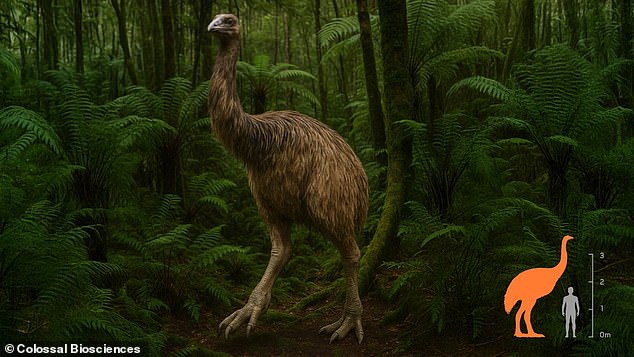Colossal Biosciences Targets Moa for De-Extinction Project
Colossal Biosciences, a biotechnology company known for its work on de-extincting species like the woolly mammoth, has announced a new initiative to bring back the moa, an extinct group of large flightless birds that once inhabited New Zealand. This ambitious project aims to use advanced genetic engineering techniques to recreate these remarkable creatures and reintroduce them into their natural habitat.
The Moa: A Lost Giant of New Zealand
The moa was a diverse group of birds consisting of nine different species, with the South Island Giant Moa being the largest. Standing at 3.6 meters (11.8 feet) tall and weighing up to 230 kg (507 lbs), this bird was a dominant herbivore in New Zealand’s ecosystem before becoming extinct around the 14th century. The extinction of the moa was largely attributed to human activity, including hunting by early Polynesian settlers and the destruction of their forest habitats.
The disappearance of the moa had a significant impact on New Zealand’s environment. It led to the extinction of other species, such as the Haast’s eagle, which relied on the moa as its primary prey. Now, with advancements in genome editing, scientists are exploring the possibility of bringing these birds back.
The Science Behind De-Extinction
Colossal Biosciences plans to use ancient DNA extracted from moa bones to reconstruct the genomes of all nine species. This process involves comparing the moa’s genetic material with that of their closest living relatives, the emu and tinamou, to identify the genes responsible for the unique traits of the moa.
Once the genomes are reconstructed, the company will use CRISPR technology to edit the DNA of modern birds, aiming to create animals that closely resemble the extinct moa. The edited embryos will then be placed into surrogate emu eggs to develop. Scientists also plan to use Primordial Germ Cell Culture, a technique that involves inserting engineered cells into emus to produce gametes, which can then be used to create embryos.
This approach has already been successfully applied in other projects, such as creating mice with woolly mammoth-like hair and wolves resembling dire wolves. However, adapting these techniques for birds presents unique challenges, particularly in developing Primordial Germ Cell Cultures for avian species.
Ethical and Ecological Considerations
Despite the scientific progress, the project has sparked debate among conservationists and ecologists. Some argue that resources should be focused on protecting existing endangered species rather than reviving those that have already gone extinct. Others raise concerns about the potential ecological impacts of reintroducing a species that has been absent for over 600 years.
Professor Stuart Pimm, an ecologist at Duke University, expressed skepticism about the feasibility of the project, stating, “Can you put a species back into the wild once you’ve exterminated it there? I think it’s exceedingly unlikely that they could do this in any meaningful way.” He also warned that the reintroduced moa could pose risks to the current ecosystem.
Cultural and Environmental Benefits
Colossal Biosciences claims that the project offers both environmental and cultural benefits. As grazing herbivores, the moa played a crucial role in shaping New Zealand’s plant life and ecosystems. Their return could help restore balance to the environment.
Additionally, the project holds deep significance for the Māori people, who historically relied on the moa for food, materials, and cultural practices. Ngāi Tahu archaeologist Kyle Davis emphasized the importance of reconnecting with ancestral knowledge and traditions through this scientific endeavor.
Looking Ahead
Colossal Biosciences has received $15 million in funding from Sir Peter Jackson, a prominent supporter of the project. The company plans to complete the genomes of all nine moa species by 2026 and hopes to begin the process of reintroducing them into the wild. While the road ahead is filled with challenges, the project represents a bold step in the field of de-extinction and ecological restoration.







